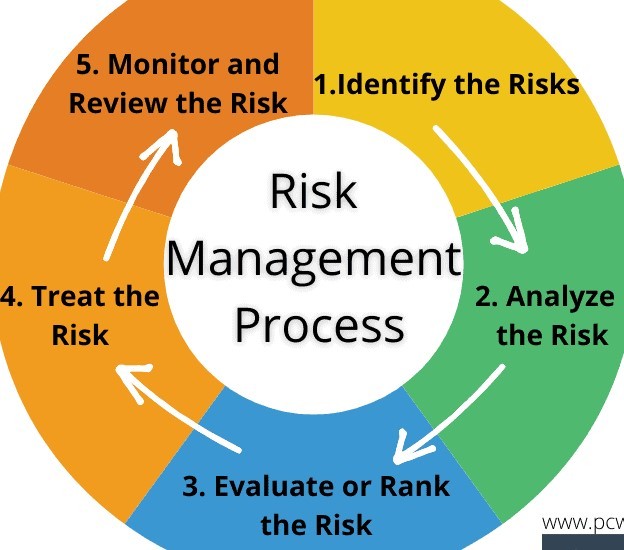How the Importance of Risk Management Promotes Successful Project Outcomes
How the Importance of Risk Management Promotes Successful Project Outcomes
Blog Article
The Critical Significance of Risk Management in Achieving Business Objectives
In the swiftly evolving organization landscape, the capability to browse unpredictability has actually come to be a critical. This is where Risk Management action in, giving a structured technique to recognizing, analyzing, and mitigating prospective roadblocks to advance. It's even more than just a safety procedure - it's a strategic tool, promoting resilience and development. As we discover the critical duty of Risk Management in achieving business goals, one can't ask yourself yet aid: exactly how does this equate right into real-world success?
Comprehending the Concept of Risk Management in Organization

The Integral Function of Risk Management in Strategic Planning
Integrating Risk Management into calculated planning works as a safeguard for companies, securing their lasting plans with a solid foundation of preparedness and strength. It operates as the organization's radar, discovering potential dangers and susceptabilities that can interrupt the path in the direction of achieving their mentioned objectives. Risk Management offers a structure for expecting unpredictabilities and devising suitable reactions, making sure the organization's survival and success even despite difficulty. By including Risk Management right into calculated preparation, companies can change these unpredictabilities right into chances for growth and technology. This calculated interweaving of Risk Management cultivates versatility, making companies extra durable and allowing them to navigate the ever-changing service landscape with confidence. Consequently, Risk Management comes to be a vital tool in critical planning, important in safeguarding sustainable success.
Methods for Identifying, Assessing, and Prioritizing Dangers
Navigating the complex landscape of threats calls for the application of details techniques for their analysis, prioritization, and recognition. The process begins with Risk identification, using devices such as SWOT evaluation, which aids in determining prospective hazards and opportunities. Next, Risk assessment is carried out to determine the potential effect and probability of each Risk. Tools such as Risk matrices and impact-probability graphes are used for this. Finally, risks are prioritized based on their potential influence and likelihood, permitting organizations to concentrate their resources on high-priority threats. This methodical method makes sure a detailed understanding of the Risk landscape, allowing companies to make enlightened decisions and properly handle risks to achieve their goals - importance of risk management.
Guarding Organizational Workflow With Efficient Risk Management
In business landscape filled with uncertainties, effective Risk Management plays an essential role in guarding business operations. It works as a protective guard, reducing the adverse effects of potential risks and making sure the smooth functioning of all procedures. By identifying and analyzing possible hazards, Risk Management makes it possible for organizations to develop durable backup strategies. This precautionary approach help in maintaining functional security, even when challenged with unanticipated scenarios. Essentially, Risk Management is the lifeline that keeps the organizational operations afloat among rough waters. It makes certain not just the survival but the sustainable growth of a company, making it a crucial device in achieving business purposes. Companies must invest in detailed Risk Management strategies to safeguard their operations.

Transforming Potential Hazards to Opportunities: The Power of Risk Management
An aggressive strategy to risk Management includes recognizing, examining, and focusing on threats to design strategies that transform them into potential benefits. Hence, by leveraging the power of Risk Management, organizations can not just guard their operations but also spur growth and accomplish their goals in an unforeseeable company setting.
Situation Studies: Success Stories of Risk Management Driving Organization Objectives
Successful implementation of Risk Management techniques has actually produced outstanding results in numerous importance of risk management organizations, emphasizing the values other of this approach. International companies like Microsoft and Google, for example, have leveraged Risk Management to lessen risks and exploit chances, driving their company purposes ahead. Microsoft's proactive Risk Management strategy helped it pivot promptly throughout the 2020 pandemic, transitioning to remote work efficiently, therefore preserving efficiency. Google, by evaluating and minimizing potential risks in its cloud-based solutions, has made certain uninterrupted service, consequently enhancing customer count on. These instances illustrate how successful Risk Management can not only guide services free from possible challenges yet likewise guide them towards their critical purposes. Therefore, Risk Management is essential to the pursuit of business objectives.
Conclusion
To conclude, Risk Management is basically vital in attaining business objectives. It supplies a methodical method to identifying, examining, and attending to possible dangers and opportunities. Greater than just mitigating threats, it likewise promotes advancement, resilience, and lasting development. By including Risk Management into critical preparation, organizations can better browse unpredictabilities, secure operations, and capitalise on chances, thus straightening with long-lasting objectives.
At its core, Risk Management is the procedure of recognizing, evaluating, and resolving potential dangers that might adversely affect a company's procedures or purposes. Next off, Risk assessment is conducted to determine the possible effect and possibility of each Risk. Threats are prioritized based on their prospective impact and chance, permitting companies to concentrate their sources on high-priority threats. By determining and assessing potential risks, Risk Management enables organizations to establish durable contingency strategies. A positive method to risk Management involves determining, evaluating, and prioritizing dangers to create approaches that transform linked here them right into prospective advantages.
Report this page